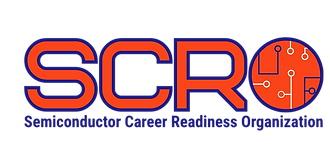.png)

WHAT DO WE DO?
The talks that we host come in a variety of forms, a common one are student held info sessions on a specific aspect of the semiconductor industry. We also invite experts working in the industry who will showcase different aspects of the field. Once a semester we invite several industry representatives to an event we call SCROCase where students invested in the semiconductor industry can learn more about career opportunities available to them, this happens in conjunction with UF's career fair and often springboards students into internship opportunities in a field they're dedicated to.
During the summer fabrication lab, students are free to tinker and observe the various steps of micro and nanofabrication first-hand. We encourage our students to figure out how the process works and how to remedy real-life issues experienced in the industry. These trial-and-error runs allow students to learn from their mistakes and truly grasp the physics behind the machinery used and the theory taught
WHAT ARE SEMICONDUCTORS?
It's a common question students ask as while they are a part of day-to-day life, the verbiage used in this industry isn't! To put it briefly, semiconductors are the foundation for microchips and computers, they are called such because they are semi-conducting. Think of them being somewhere between metal and a rock, this allows us to control voltages moving across them in well-defined ways, which eventually leads to all the 1's and 0's that make up a computer.
"So, what's the deal with semiconductor fabrication?" It's a very complex field that is rapidly evolving every year, with the developments leading to better products that have many real world commercial and entertainment applications. It's the reason why your phone can have a better camera, faster Wi-Fi speeds, longer battery life, and so much more. It's the reason your gaming PC can render vast worlds, real time lighting simulations, and online banking can be secure. Software and hardware must work together, and without one the other is lost, and this club is focused mainly on the hardware aspect of this dynamic.